

Hyperpigmentation and Melasma affect people of all skin tones and types, often appearing as brown or gray marks on the face and body. These changes in pigmentation can be caused by sun exposure, hormonal shifts, common during pregnancy, inflammation, or even acne. While they’re typically harmless, they can impact your confidence and be difficult to treat without expert guidance. At our practice, we take a customized, science-backed approach to identifying the type of pigmentation and creating a targeted treatment plan that works for your unique skin.
SUN SPOTS:
Also known as liver spots or solar lentigines, sun spots are small, flat brown areas on the skin caused by prolonged exposure to ultraviolet (UV) rays. These spots are marked by an increased number of pigment-producing cells, unlike freckles, which have a normal number of cells that are simply overactive.
Sun spots typically appear on areas that get the most sun exposure, the face, chest, arms, and hands and are especially common in those with lighter skin tones.
Avoiding sun spots completely is nearly impossible. To minimize the risk, we strongly recommend applying a broad-spectrum sunscreen with at least SPF 30, every single day, year-round, regardless of the weather and reapplying every two hours, especially when swimming or sweating.
MELASMA:
Melasma appears as brown patches, most commonly found on the face, especially the cheeks and jawline. It can also show up on the temples and upper lip, where it may resemble a mustache; while it's a common condition, its exact cause remains unclear.
Melasma is influenced by both genetics and hormonal fluctuations. It tends to worsen during times of increased estrogen levels, such as pregnancy or while taking birth control pills. This hormonal link is why melasma is often nicknamed the “mask of pregnancy.” Other contributing factors include heat, ultraviolet (UV) exposure, and blue light from devices like phones, computers, and even indoor lighting.
Melasma is more prevalent in people with melanated skin. For treatment, we recommend using a mix of skin-brightening and lightening products, such as retinoids, antioxidants and hydroquinone. Sunscreen is essential. SPF is non-negotiable, mineral formulas with iron oxides are best, as they also shield against blue light. Even minimal UV exposure can reverse weeks of progress with topical treatments, so daily sunscreen use is critical. There are also in-office procedures, such as peels and lasers, that can help, though it’s important to be treated by a provider who is well versed in treating melasma because it’s easy to exacerbate the condition.
POST-INFLAMMATORY HYPERPIGMENTATION (PIH):
Think of post-inflammatory hyperpigmentation (PIH) as a stain left behind on the skin. Any type of inflammation, whether it’s from a burn, breakout, or other irritation, can leave behind a dark mark in that area. These spots can linger for months or even years, and in some cases, they can be more frustrating than the initial condition itself.
The appearance of PIH varies depending on skin tone. Lighter skin types tend to develop red or pink marks, while deeper skin tones often experience discoloration that’s brown, purple, or even black.
Because PIH (post-inflammatory hyperpigmentation), results from inflammation, we emphasize the importance of treating the root cause first, whether it’s acne, eczema, or another condition. While these dark marks may gradually fade on their own, early intervention often leads to better results.
For quicker results, we recommend targeting hyperpigmentation as soon as it appears, using energy-based treatments tailored to the color of the discoloration.
Lasers use focused light energy to target and break down excess melanin (the pigment responsible for dark spots) in the skin. Your body then gradually clears the pigment particles, resulting in a more even skin tone. We offer a range of advanced laser therapies tailored to the type and depth of discoloration, whether you’re dealing with sun spots, melasma or post-inflammatory hyperpigmentation (PIH) .
Q-switched Nd:YAG Laser: Targets deep pigmentation, including melasma and post-inflammatory hyperpigmentation (PIH), with precision and safety for all skin tones.
Fractional Lasers: These versatile lasers treat pigmentation and improve overall skin quality by stimulating collagen production and resurfacing the skin. Great for PIH (post inflammatory hyperpigmentation), sun damage, acne scarring, uneven tone, and texture.
Each laser treatment is customized to your skin’s needs to ensure safe, effective results. During your consultation, we’ll determine the best approach—often combining laser therapy with topical treatments to maximize improvement and minimize recurrence.
To target brown spots, we use a combination of hydroquinone, kojic acid, vitamin C, and alpha hydroxy acids (AHAs) like glycolic acid. This powerful blend works gently yet effectively to lighten hyperpigmentation while brightening and smoothing the skin. These clinically proven ingredients work synergistically to promote a more even, radiant complexion by visibly reducing dark spots and improving overall skin tone and texture.
We also look for ingredients that inhibit melanin production, such as retinol, which enhances cell turnover, and AHAs, which provide a gentle exfoliating effect to help fade discoloration over time.
Other in-office treatment options include: Glycolic Acid Peels and HydraFacial MD with Brightening Boosters—a targeted super-serum designed to address dullness and uneven texture, even for sensitive skin types.
SHOP HERE: JAS Anti - Aging TRIO, expertly formulated to replenish, exfoliate, and restore your skin’s natural glow. These ingredients work synergistically to visibly brighten, lighten, and tighten the skin for a more even, glowing appearance.
⚠️ Important
Always see a board-certified dermatologist or laser specialist, especially if you have darker skin.
Sun protection is non-negotiable—exposure after treatment can trigger new pigment.
If you are tired of looking older or want the spots removed, schedule a laser consultation and restore your skin to its natural beauty. Our Cosmetic Consultation Reimbursement policy is offered to all patients. Schedule an office visit to discuss your concerns and skincare goals with Dr. Robinson and the office visit cost will be applied to the future cost for the "consulted procedure". The "consulted procedure" must be completed within 30 days of your consult visit.
Measles is an airborne, extremely infectious and potentially severe rash illness. It can be very serious for small children, but is easily preventable by a vaccine. Two doses of MMR vaccine are 97% effective at preventing measles, 1 dose is 93% effective. It is uncommon for someone fully vaccinated to develop measles. However, breakthrough infections (when someone becomes infected after they have been vaccinated) can occur, especially in communities experiencing an outbreak where high levels of measles virus are circulating. But the good news is, fully vaccinated people who get measles seem more likely to have a milder illness. Fully vaccinated people seem also less likely to spread the disease to other people, including people who can’t get vaccinated because they are too young or have weakened immune systems.
Measles was declared eliminated in the United States in 2000. This was thanks to a very high percentage of people receiving the safe and effective measles, mumps, and rubella (MMR) vaccine. In recent years, however: U.S. MMR coverage among kindergarteners is now below the 95% coverage target—much lower in some communities—and is decreasing. The unvaccinated individuals have been protected through community immunity (herd immunity), meaning the vaccinated community.
The disease spreads through the air by respiratory droplets produced from coughing or sneezing or touching an infected surface. The measles virus can linger in the air for several hours after an infected person coughs or sneezes.
Measles is not a seasonal virus. However, measles is often spread over times of high travel (like spring break) or in situations where unvaccinated persons are in close quarters (like summer camp).
Immediately call your healthcare provider and let them know that you have been exposed to someone who has measles. Your healthcare provider can:
Determine if you are immune to measles based on your vaccination record, age, or laboratory evidence.
Make special arrangements to evaluate you, if needed, without putting other patients and medical office staff at risk.
If you are not immune to measles, MMR vaccine or a medicine called immune globulin may help reduce your risk of developing measles. Your healthcare provider can advise you, and monitor you for signs and symptoms of measles.
If you are not immune and do not get MMR or immune globulin, you should stay away from settings where there are susceptible people (such as schools, hospitals, or childcare) until your healthcare provider says it's okay to return. This will help ensure that you do not spread it to others.
Measles symptoms don't appear until 10 to 14 days after exposure. They include:
If you have measles, you should stay home for four days after you develop the rash. Staying home is an important way to not spread measles to other people. Ask your healthcare provider when it is safe to be around other people again.
You should also:
CDC considers you protected from measles if you have written documentation (records) showing at least one of the following:
You received two doses of measles-containing vaccine, and you are:
No. CDC considers people who received two doses of measles vaccine as children according to the U.S. vaccination schedule protected for life, and they do not ever need a booster dose.
If you're not sure whether you are fully vaccinated, talk with your healthcare provider.
There's no treatment to get rid of an established measles infection, but over-the-counter fever reducers or vitamin A may help with symptoms. Measles usually goes away on its own after about 10 to 14 days.
Vaccines, maintenance, and post exposure prophylaxis:
Vaccines, maintenance, and post-exposure prophylaxis


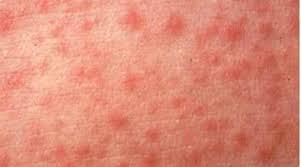
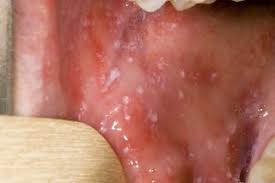
Hand-Foot-Mouth Disease is a mild, contagious viral infection common in young children. It may causes a blister-like rash on your child's hands and feet and painful ogres in their mouth.The disease most often affects babies and children younger than 5 years old. HFMD is typically mild and usually clears up on it's own within 7-10 days.
Hand, foot and mouth disease symptoms typically appear in two stages. When the illness first starts, your child may have flu-like symptoms, such as
After a couple of days, these symptoms will go away and new symptoms will develop:
Viruses belonging to the coxsackievirus and enterovirus families. These viruses can be found in your child's digestive tract, including:
Yes, HFMD is contagious. Your child is most contagious during the first few days of the illness, often before the rash appears. Your child is less likely to spread it to others once the rash/blisters dry up. However, the virus can live in their stool (poop) for weeks after the rash goes away.
Your dermatologist or healthcare provider can diagnose HFMD by looking at your child's blisters. Occasionally, the will test for the virus by sending throat swab samples, or samples taken from blisters or stool (poop) to a lab
If you know your child has been exposed to the virus, alert their provider before scheduling an appointment to protect the health of others. You provider may suggest a virtual visit and make treatment suggestion over the phone.
There is no medication for HFMD. Antibiotics won't work because they don't treat viruses. Fortunately, symptoms are usually mild. Over the counter (OTC) pain relievers such as acetaminophen (Tylenol) and ibuprofen (Advil, Motrin) for fever and pain. Do not give your child aspirin, w which may cause Reye's syndrome.
The viruses that cause Hand, foot and mouth disease are highly contagious. The infection often spreads before a person realizes they're sick. You can slow or stop the spread of the illness through these good hygiene habits.
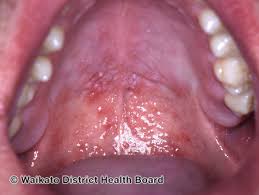
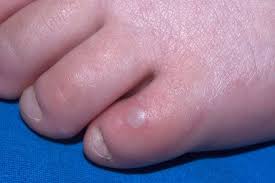
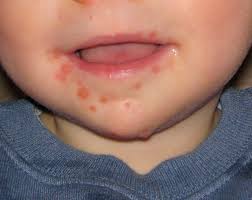
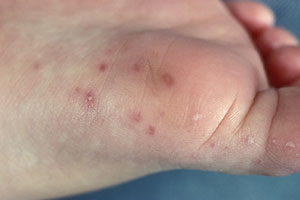
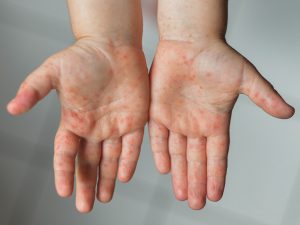
Dr. Robinson, a board-certified dermatologist based in New York City & a member of The American Academy of Dermatology, he is known for his expertise in cosmetic dermatology. He has been performing "lip flips" & "lip fillers" around the mouth for many years. The key differences between these two popular procedures for enhancing the appearance of the lips are the "lip flip" primarily alters the shape and position of the lips while "lip fillers" add volume and fullness.
While they may sound similar, "lip flips" and "lip fillers" are totally different. While "lip flips" use a neuromodulator such as Botox, lip fillers use natural dermal volumisers, containing hyaluronic acid to restore lost volume and fullness to deflated lips to help turn up the corners of your mouth & undo the impression of unhappiness and re-establish a more youthful appearance to thinning lips.
A "Lip Flip" is a non-surgical, non-invasive, cosmetic procedure that gently creates a fuller looking lip without increasing the actual volume. "Lip flip" patients are often categorized as having a "gummy-smile", whose upper lip may curl inward due to a thinning upper lip that disappears when smiling. The "lip flip" injects neuromodulators, such as Botox, to relax a muscle in the upper lip border, causing it to "flip" outward and achieve a more natural appearance of a fuller upper lip, showing little gum..
Lip Fillers or lip augmentation, is also a non-surgical, non-invasive, cosmetic procedure involving the use of hyaluronic acid-based dermal fillers, such as Juvederm or Restylane, to add volume, shape & definition to the lips. The filler is injected directly into the lips to increase their size, enhance symmetry, and improve overall lip contour. Lip fillers can achieve more dramatic results compared to the lip flip and are often preferred by individuals seeking significant lip augmentation.
While they may sound similar, both are non-invasive procedures with no-downtime, lip flips and lip fillers are totally different. While lip flips use a neuromodulator such as Botox, lip fillers use natural dermal volumisers, containing hyaluronic acid which is injected directly into the lips to restore lost volume and fullness to deflated lips to help turn up the corners of your mouth & undo the impression of unhappiness and re-establish a more youthful appearance to thinning lips.
Lip Filler results usually last longer (6-8 months) compared to the Lip Flip (3-4 months).
Both procedures are minimally invasive, but patients may experience some swelling, bruising, or temporary numbness at the injection sites.
Schedule an office visit to discuss your concerns and skincare goals with Dr. Robinson and the office visit cost will be applied to the future cost for the "consulted procedure". The "consulted procedure" must be completed within 30 days of your consult visit.
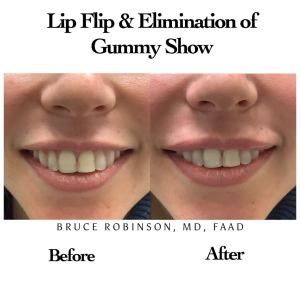
edit in Oxygen
Advanced skin cancer treatment with no downtime, scarring, or bleeding, better results than MOHS or cold steel excision.
Patients on anticoagulant therapy do not have to stop their medication before treatment, therefore not increasing their risk for stroke and/or heart attack, quick healing, & no risk of post-operative complications!
This treatment is especially great for actors/actresses or professionals in the public eye who can't afford downtime or a scar, athletes or weekend warriors who want to continue their workouts unencumbered and helpful with infirm or older patients who are not able to perform extensive wound care and withstand the rigors of a skin flap or graft.
Non-ablative fractional laser therapy has already demonstrated remarkable success with minimal downtime & discomfort as a gentle yet effective treatment of actinic keratosis (AK), the most common type of pre-cancerous skin conditions.
Now we can add the use of non-ablative fractional laser therapy as the up and coming gold standard to the treatment of squamous and basal cell carcinomas.
Shingles causes a painful, blistering rash on your skin. If you get shingles, you may notice the following three stages:
Before the rash appears: For 1 to 2 days before the rash appears, you may have pain, burning, or tingling on an area of skin where the rash will develop. Some people have described an “electrical sensation” on their skin before getting the rash.
Rash appears: A painful, blistering rash appears. It usually appears on one side of your body, often on the torso; however, it can appear anywhere on your skin. Some people get more blisters after the rash appears, so it can seem that the rash is spreading.
Rash starts to clear: As the rash clears, the blisters may crack open, bleed, and scab over. For most people, the rash will clear within 2 to 4 weeks.
If you have a rash of blisters on your skin or a rash that looks like those shown below, schedule an appointment immediately for a diagnosis. If you have shingles, it’s important to get treatment, preferably within 1 to 3 days.
If you’ve had the rash for longer than 2 to 3 days, it’s still important to schedule an appointment!
Along with a painful, blistering rash, some people can also have one or more of the following:
Rash: PLEASE call our office to schedule an appointment immediately or other health-care provider within 3 days of getting the rash. When treatment is started within 3 days, treatment can prevent possible complications, such as long-lasting nerve pain.
Receiving treatment after 3 days still has benefits, so you should still schedule an appoointment to see your doctor if you’ve had the rash for longer than 3 days.
Before taking any medication, it’s important to make sure that you have shingles.We will prescribe an antiviral medication. One of three antiviral medications is usually prescribed—acyclovir, famciclovir, or valacyclovi to:
Pain: Over-the-counter medication(s) can help, such as:
If you have severe pain, we may prescribe a medication that reduces inflammation, such as a corticosteroid.
Talk with your doctor about getting the shingles vaccine, Shingrix. You can get shingles again. A shingles vaccine that the U.S. Food and Drug Administration (FDA) approved in 2017 can greatly reduce your risk of developing shingles again. You can learn more about this vaccine at, Shingles Vaccine, CDC.
The CDC recommends that adults 50 years and older get two doses of the shingles vaccine called Shingrix (recombinant zoster vaccine) to prevent shingles and the complications from the disease. Adults 19 years and older who have weakened immune systems because of disease or therapy should also get two doses of Shingrix, as they have a higher risk of getting shingles and related complications.
Until the shingles rash clears, you are contagious.
Anyone who has not had chickenpox (or the vaccine for chickenpox) can catch the virus. This could cause chickenpox. To avoid infecting others, who could get chickenpox and later shingles, dermatologists recommend that you do the following until the rash clears:
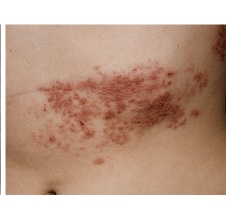
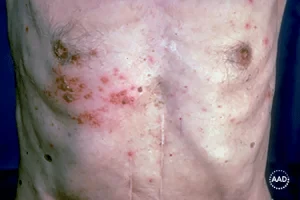
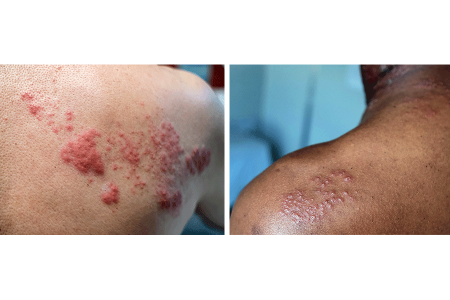
Having a shingles rash on your face is a medical emergency.
Even if the rash isn’t on your eye, it could still affect your eyesight. Immediately seeing a doctor for treatment could save your eyesight.
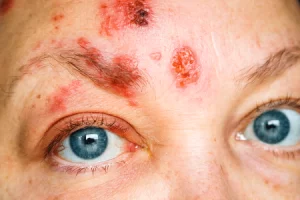
PRP and Fraxel Laser are powerful on their own, but together they offer a "powerhouse" treatment that will naturally transform and rejuvenate your appearance, while providing dramatic anti-aging results. The combination boosts your own collagen production and fibroblast proliferation increasing you skin's elasticity, texture and tone. Recover lost volume, diminish the appearance of fine lines, sun damage, skin pigmentation & acne scars. The addition of PRP (platelet rich plasma) after Fraxel Laser, not only accelerates the recovery process and adds nutrient rich growth factors that stimulate cells to generate newer, healthier tissue, it repairs aged existing tissue as well.
We increase the potency of platelets and other growth factors by using a double-spin, high speed centrifugation process to concentrate the Platelet-Rich Plasma (PRP) preparation which results in a more consistent superior cosmetic result. It is important to note that specific PRP preparation varies among healthcare providers which directly affects the quality of cosmetic results. Our patient's have said "the end result seems almost magical 🪄."
The combination of PRP/Fraxel Laser can yield a better result compared to using Fraxel or PRP alone. Facials that harvest and apply your own platelet-rich-plasma (PRP) became popular with cosmetic procedures because of their role in accelerating wound healing. Research in skin rejuvenation has proven PRP:
The Fraxel Laser creates thousands of microscopic, invisible treatment zones, allowing openings for the PRP "growth factors" to penetrate the skin. There are NO holes, or needles used to inject the PRP, providing a uniform immersion of the PRP growth factors to the treatment area. This promotes excellent results, faster healing and reduces downtime compared to other traditional PRP application methods .
So many advanced and innovative treatments are available to improve your skin, but how can you tell which treatment will most efficiently resurface and regenerate your complexion? Using Botox and dermal fillers can tackle some wrinkles and lost volume, but what about a treatment that actually replaces dull and damaged skin cells with new and healthy tissue? A Fraxel laser resurfacing treatment paired with PRP is the ultimate solution. You are effectively jump-starting your body's own natural rejuvenation systems, including collagen & elastin growth.
This non-surgical treatment allows you to stimulate your body’s own natural repair and rejuvenation processes. On the day of your visit we apply a thin layer of numbing cream to the treatment area. While you are numbing we draw a small amount of blood to use for the PRP. The centrifuge process takes approximately 20-25 minutes. After 30 minutes the numbing cream is removed. Dr. Robinson treats the area using the Fraxel Laser. Once the Fraxel treatment is complete your PRP (platelet rich plasma) is gently applied over the treatment area.
Both Fraxel Laser and PRP have long-lasting benefits. By stimulating one's own collagen & elastin production, PRP and Fraxel yields wonderful results within a few days that may last years.


We are pleased to introduce ProNox™ in our practice, a patient controlled, inhaled analgesia for in-office use. We want our patients to achieve their cosmetic goals worry-free. Patients say that it has made all the difference in moving forward with many cosmetic procedures.
The use of nitrous oxide in Medical, Cosmetic & Laser Dermatologic procedures is becoming more common. Our goal is to provide each patient with a pain-free experience and to work with their varied anxiety levels. While we have excellent topical numbing options for pain control, nitrous oxide can help calm the patient who is nervous or anxious and also help with pain relief.
What should you know about the procedure before finalizing your decision? We consider these the five most important distinctions.
While a facelift lasts anywhere from 5 to 10 years, a liquid facelift typically lasts up to 4 - 6 months, for the best possible and longest-lasting results. This makes the procedure a good choice for patients who want apparent improvement, but aren’t quite ready for a surgical facelift or mini facelift—whether due to inhibitions about the surgery or because one’s signs of facial aging aren’t yet very dramatic.
Results of a liquid facelift are evident almost immediately. But since the procedure has so much potential, it’s possible that more than one treatment session would be needed for the best results. This allows improvements to be made incrementally. Some patients appreciate the fact this allows their results to come in more gradually and thus look more natural.
A liquid facelift has excellent potential, but it should be understood from the outset that since no incisions are made and no actual surgery is performed, its results will naturally fall shy of what a complete surgical facelift can accomplish. But let’s look at what a liquid facelift can achieve:
A liquid facelift is cheaper and more affordable than a facelift or mini facelift, with the exact cost depending upon how much of what types of fillers are needed to help you reach your goals for the procedure. Health insurance does not cover the cost of a facelift or a liquid facelift.
A liquid facelift is done with a combination of dermal fillers and neuromodulators. That means fillers like Radiesse®, Juvéderm®, Belotero®, Restylane® will be used to plump and add volume to the skin in deprived areas, while neuromodulators like Botox will be used to reduce the appearance of fine lines and facial wrinkles.
The art of a liquid facelift lies in how it’s done precisely. How much of what fillers are applied in what portions of the face? Dr. Bruce Robinson has mastered this art and looks forward to helping you achieve your facial beauty goals—without surgery, without incisions, and with minimal downtime.
Schedule an office visit to discuss your concerns and skincare goals with Dr. Robinson and the office visit cost will be applied to the future cost for the "consulted procedure". The "consulted procedure" must be completed within 30 days of your consult visit.

